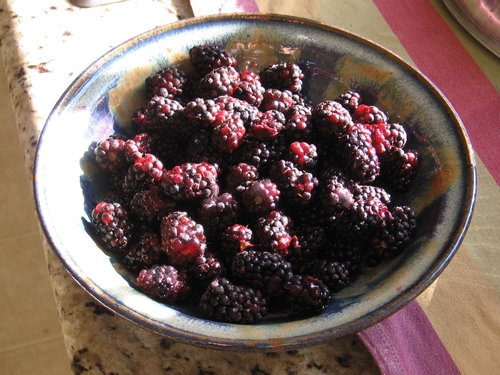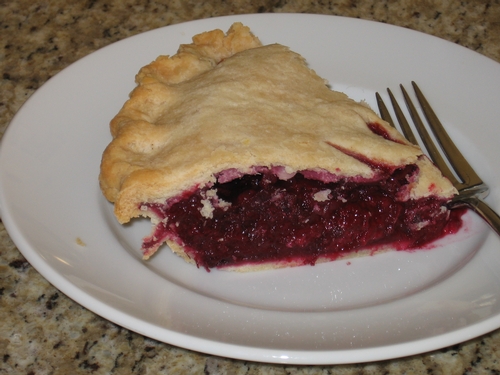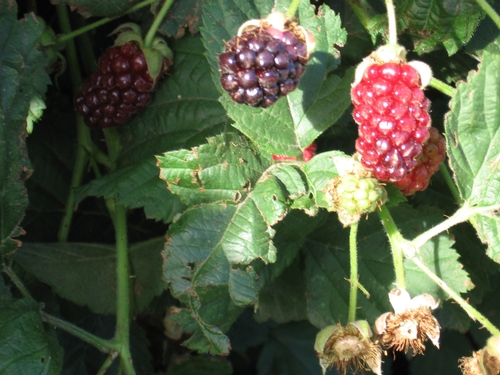It's blackberry and boysenberry pickin' time
Blackberries and boysenberries are amazing fruits. The fleeting fruit bearing nature of these productive plants are to be truly appreciated by pie and jam connoisseurs alike. Berries are a very low glycemic index foods (low in sugar) and a great treat for nutritionally conscious eaters.
Every gardener can enjoy and/or hate a productive berry plant. The fruit production is confined to a very short season but the plant can take on enormous proportions if left unchecked. One must be ever diligent to keep the berry plants confined to the planting row and kept trellised to avoid the “overgrown” berry heap in the backyard. Nonetheless, if a person has a place in the sun for a four-foot-wide row of berries, the rewards are terrific.
One can even plant them on south facing wal
l as long as you can put up a sturdy supporting trellis. If you live in a very hot summer climate, it may pay to cover your berry plants with a shade cloth, especially during ripening.From one plant you can harvest enough berries for a batch of delicious jam, or a luscious pie, some fruit for breakfast and, my favorite, blackberry popsicles (recipe to follow). After harvest, cut the berry canes that have already produced fruit back to the ground and trellis up those new canes growing up from the bottom. If you do that on an annual basis, you will keep the plants under control.
There are many varieties of berries and planting several with varying ripening periods spreads the harvest out over a longer time. Many varieties have a unique flavor, different from the “wild blackberry” that you may remember from the plant growing in the ditch. Some are thornless and easier to manage and others are quite thorny but the flavor is to die for.
Berries are divided into two groups: the trailing blackberries and erect blackberries. Trailing blackberries such as Boysen and Ollalie are popular varieties that are just now becoming ripe in Northern California. I have also been growing three of the erect cultivars that require a quite tall trellis - upwards of six to seven feet. But the fruit on these types are very large, and beautiful and the plants are vigorous and disease resistant. The varieties are “Black Satin," “Triple Crown” and “Cherokee.” These varieties will become ripe in another couple of weeks.
For more information on growing blackberries in your garden, visit the California Gardening website.
While you can use the berries in many ways, one that is truly a delight is to make blackberry popsicles. Here is the recipe:
Start by making a simple syrup by heating 2/3 cup of water to boiling, pour in 2/3 cup of white cane sugar and stir until dissolved. Remove from heat and allow to cool. Put three cups of washed fresh berries into a bowl and mash. You may want to strain out the seeds by pushing the fruit through a strainer, but you don’t need to. Blend with the cooled simple syrup. (You can also just put the berries into a blender with 2/3 cup of simple syrup.)
Pour the mixture into your popsicle mold and freeze for 3 to 4 hours. Insert the popsicle sticks and freeze 3 to 4 hours more. When frozen solid, take a popsicle in hand, mosey your way out to the garden, sit in a lounge chair in the shade and lick your troubles away.



